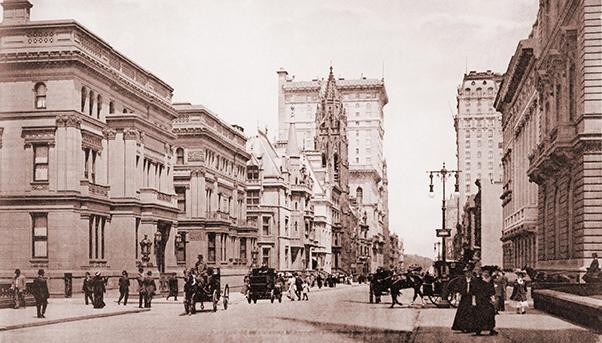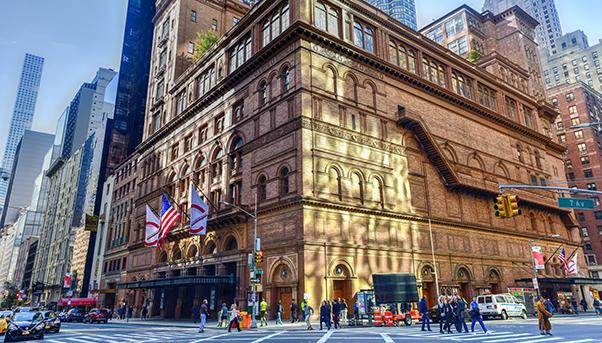
What did a descendant of Dutch farmers (Vanderbilt), the son of a Bavarian cattle trader (Lehman) and a poor Scott immigrant (Carnegie) have in common? Wealth and power. As captains of industry and finance, they were among the feared and venerated men who helped turn the United States into a modern and prosperous country in the late 1800s.
At that time, the United States was the new frontier. Like Germany, it was an emerging country in the second industrial revolution, a period later to be known as the Gilded Age. Such was the pace of industrialization that wages rose by as much 60% between 1860 and 1890. Many factors came into play to make this happen: abundant resources (land in particular, but also capital and labor, which came in successive waves of immigrants); inclusive and egalitarian institutions, at least for whites; and a vast and growing market. The United States was the place where Big Business was born: companies that spanned an entire continent and brought into being new classes of professionals and investors, such as managers, engineers, technicians and shareholders.
The engine behind this development was infrastructure, which, for the age, was epitomized in particular by the railroad. Its construction involved massive sums of capital and vast numbers of laborers deployed across the country. The railroad proved crucial for the development of the country’s economy because it facilitated production and distribution. It is during this period in which men like Collis Potter Huntington (1821-1900) came to the fore. He contributed to the construction of the first transcontinental railroad, a visionary project that connected the railway systems of the East Coast with those of the West. Travelers were able to board a train at the station on 42nd Street in New York (built by Cornelius Vanderbilt, 1794-1877) and in seven days comfortably step down out of their carriage in San Francisco, avoiding the long journey previously done by sea.
Along with Huntington, Lelan Stanford (1824-1893) was one of the railroad barons of the West Coast. He would later become governor of California and found Stanford University.
Their interests often intersected with those of magnates of new industries like steel – Andrew Carnegie (1835-1919) and Henry Clay Frick (1849-1919) – and oil – John D. Rockefeller (1839-1937). Nearly all of them were founders of family dynasties.
Behind the birth of these industries – steel, rail and oil – was the support of finance, embodied by families like the Lehmans. Brothers Emanuel, Henry and Mayer rose from the cotton trade to the upper echelons of finance frequented by the likes of Andrew Mellon, a banker and eventual treasury secretary, or John Pierpont Morgan (1837-1913), the dominus of Morgan Bank and lender of last resort during the Panic of 1907 (the Federal Reserve did not exist at the time).

Morgan’s death marked the end of their era that had already begun its decline in the early 1900s with the arrival of President Theodore Roosevelt, who was determined to curb the power of the robber barons of steel, rail and oil, as they came to be known. Roosevelt waged war against the unholy alliance of corrupt business and corrupt politics. He accused it presiding over an invisible government behind the elected one.
The influence that robber barons had over politics was either direct (Mellon was treasury secretary under President Warren Harding) and indirect (Vanderbilt was quoted by one historian as saying “Law! What do I care about law? I got power, hain’t I?”).
Roosevelt’s influence as a public figure strengthened as he pursued the completion of the Panama Canal, as visionary a work as any at the time.
Reflecting his support of the professional class, he entrusted the project to John Findley Wallace, a manager of the Illinois Central Railroad and John Frank Stevens of the Great Northern Railway. It was just one example of the interaction between public and private sectors that transformed the country. It also highlighted the role of the so-called developmental state in overseeing the construction of infrastructure to support the creation of a world economy.
One of the legacies of the age of the Carnegies, Morgans and Vanderbilts is the philanthropic institution. Their names are tied to universities (Carnegie Mellon in Pittsburgh, Stanford in San Francisco and Vanderbilt in Nashville), museums (Frick Collection in in New York and Huntington Library, Art Collection and Botanical Gardens in Los Angeles) and other entities like Carnegie Hall and the Pierpont Morgan Library, both in New York.

